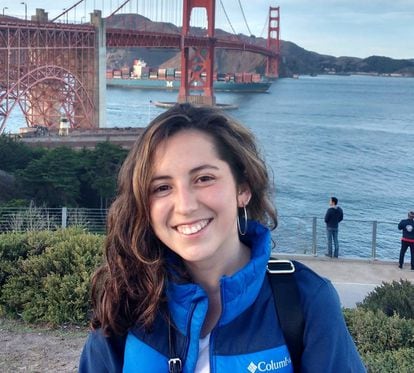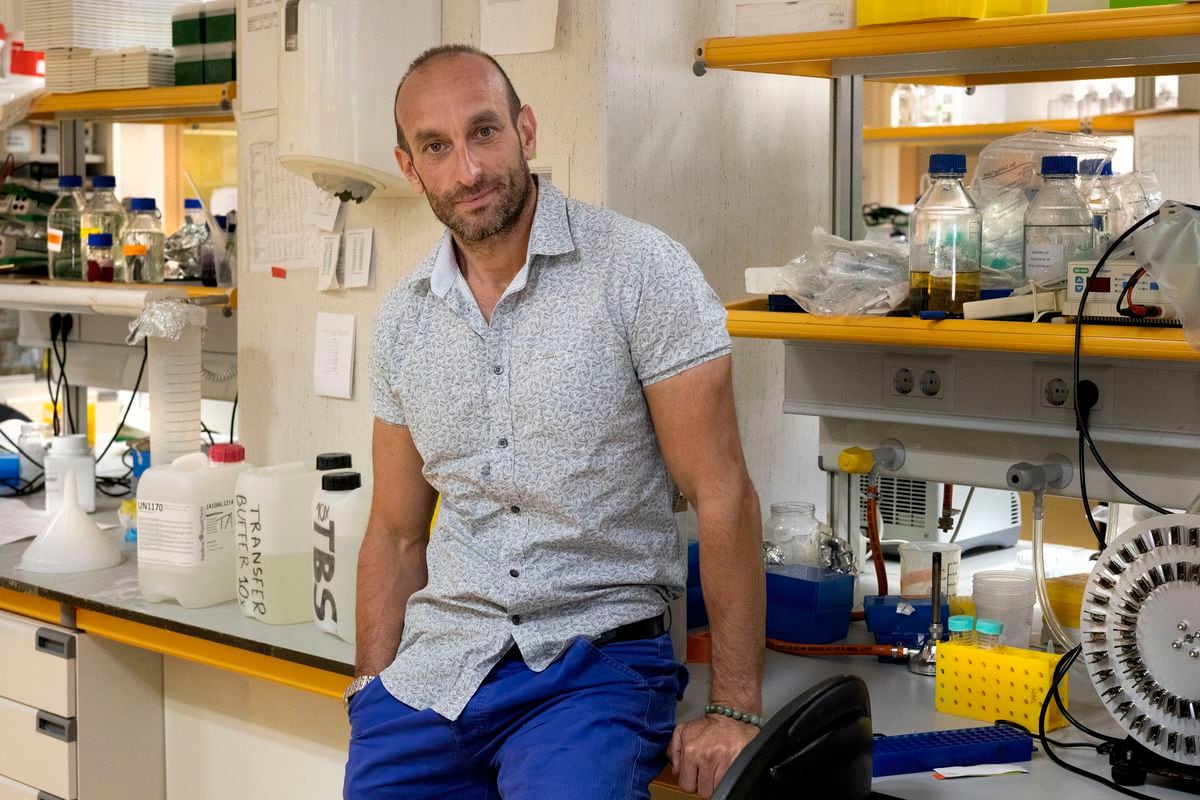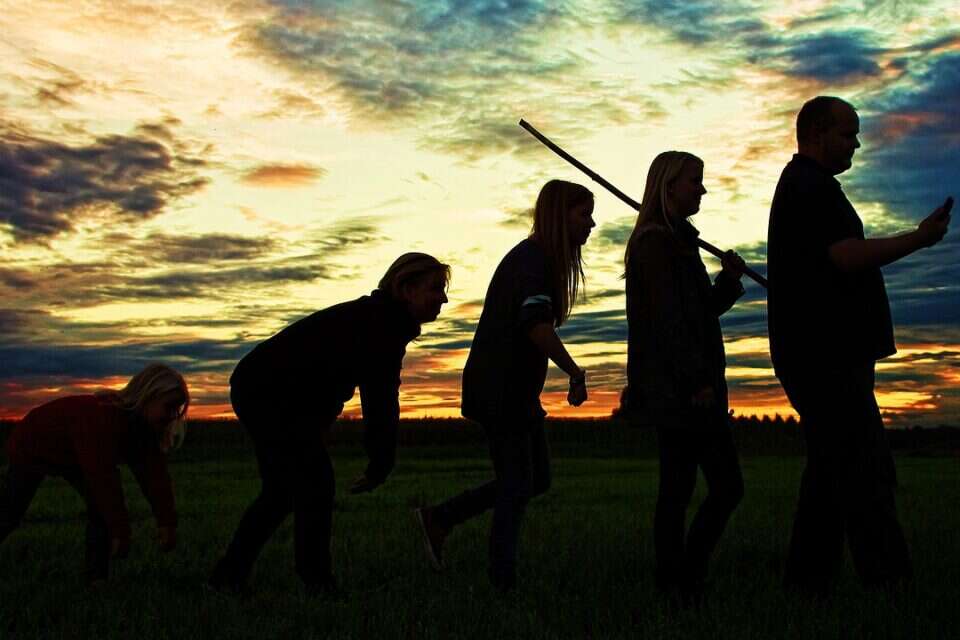The operating manual of a human being is written in each of its cells, in a DNA molecule about two meters long, folded in unimaginable ways, with the instructions to transmit a thought, dance a dance or hum a song.
The first absolutely complete read of a person's DNA—their genome—has revealed an unknown world of redundant sequences.
It's counterintuitive, but these repeated stretches in a human's DNA help make it unique.
An international scientific team, called the T2T Consortium, published this Thursday the first truly complete sequence of a human genome.
Until now only 92% had been read.
The authors compare their task with a gigantic puzzle of a city, in which 8% of the pieces remained to fit, those of the blue sky, too repetitive to find their place.
Advances in technology have now made it possible to bring order to these redundant sections.
Bioinformatician Daniela Soto, a member of the consortium, is elated.
“We have opened a dark box and now we can see the 8% of the genome that we couldn't see before.
The impact on medicine remains to be seen”, celebrates Soto, a 33-year-old Chilean researcher who is doing her doctorate at the University of California at Davis (USA).
Her American colleague Karen Miga, co-director of the consortium, believes that the new genome will safely illuminate genetic diseases, human diversity and the evolution of our species, she explained in a statement.
Bioinformatician Daniela Soto, from the University of California at Davis (USA).
The complete genome of a human is a text of 3,055 million letters (ATTGCTGAA…), in which each letter is simply the initial of a chemical compound with different amounts of carbon, hydrogen, nitrogen and oxygen.
C, for example, is cytosine (C₄H₅N₃O).
If you imagine this operating manual as a famous poem by Antonio Machado, until now technology allowed short sections to be read, such as "walker, there is no", "path", "it is done", "path when walking", "when walking ”, “the way is made”.
It was complex to put the sentences in order and it was almost impossible to find out that the verse “walker, there is no path” was repeated twice.
New technologies, such as the sequencers of the British company Oxford Nanopore, allow millions of letters to be read in a row,
while the American platform PacBio achieves high definition reading of up to 20,000 letters.
It's like putting on glasses to see up close.
The first complete genome of a person adds 200 million letters to the human poem and corrects thousands of errors in the current reference sequence, published in 2001 and updated since then.
The DNA of a cell is divided into 46 packages, called chromosomes, which in turn are divided into sections, called genes.
In the example of the poem, the gene would be a line: "Walker, there is no way."
Some of these genes are instructions for making proteins, such as some hormones or the antibodies that defend us against viruses.
The complete genome, published this Thursday in the journal
Science
, includes 99 genes apparently linked to proteins, hitherto unknown, and another 2,000 presumed genes that will have to be studied in detail.
The T2T Consortium already released a draft of its results almost a year ago.
The amazing thing is that one person can have two copies of a gene - "Walker, there is no way, wayfarer, there is no way" -, but another human being can have 25 copies of that same gene.
The T2T Consortium has now joined forces with the Human Reference Pangenome Consortium, another international project that aims to obtain the complete genomes of 350 people, from diverse racial groups, to understand the role of these repeats and to detect disease-associated variants, such as cancer.
These areas of the genome were formerly called junk DNA, but more and more we know that they are not junk.
Carmen Ayuso, doctor
The reference genome used so far, called GRCh38, is a sequence, full of holes, made from bits of DNA from different people.
The new complete genome, baptized T2T-CHM13 and with mainly European ancestry, has been obtained from a hydatidiform mole, a tumor derived from a human embryo that rejected its mother's DNA and duplicated that of her father.
This absence of genetic mixture has facilitated the detailed reading of the genome.
Chromosomes are X-shaped and the joining point of their four arms is called the centromere.
Until now unknown sequences are concentrated in these central regions, essential for the multiplication of DNA during cell division and in the formation of eggs and sperm.
Centromere errors can lead to miscarriages, birth defects, and cancer.
To obtain disease diagnoses, doctors and scientists read fragments of their patients' genomes and use the reference genome for comparison, as is done in puzzles with the picture of the city with blue sky in the box.
Daniela Soto's team at the T2T Consortium has already analyzed the genomes of more than 3,000 people using the new model and their results suggest that tens of thousands of errors are avoided, for example, in more than 200 genes involved in diseases.
The National Institute of Standards and Technology of the USA has affirmed that this complete genome can "give a great impetus to the investigation of genetic disorders", improving diagnoses in the medium term.
The doctor Carmen Ayuso, head of the genetics service at the Fundación Jiménez Díaz hospital in Madrid, believes that the new results "are of enormous importance" for science.
“These parts of the genome were formerly called junk DNA, but more and more we know that they are not junk,” she explains.
Ayuso emphasizes that in these regions of the chromosomes there are authentic "archaeological remains" of what the evolution of the human being has been.
The T2T Consortium has also illuminated the sequence of telomeres, a kind of protective caps that constitute the ends of the X formed by each chromosome.
Those telomeres wear out and shorten with age and, conversely, grow in malignant tumors, when cells become immortal.
Ayuso, who has not participated in the consortium, believes that "knowing in detail how telomeres are structured can be very important for understanding ageing, cancer and even some rare diseases."
The biologist Miguel Ángel Moreno, head of the genetics department at the Ramón y Cajal hospital in Madrid, also applauds the new work, but is cautious, as it is still the DNA of a single person with European ancestors.
“It is interesting to have a first genome with its complete sequence, but we will have to wait to have other individuals sequenced, from different populations, to replace the current reference genome”, he believes.
Moreno recalls that the genome can vary enormously between two different people, without associated health problems.
The Rare Diseases Network Biomedical Research Center, in which he participates, published in 2016 a catalog with 10,000 specific variants of the Spanish population.
The geneticist Ángel Carracedo, from the University of Santiago de Compostela, also celebrates the fact that there is “a more complete reference genome”, with unpublished information on redundant DNA, whose number of repetitions varies so much from one person to another.
"It opens the door to more studies that analyze the diversity of these repetitive sequences and can relate them to diseases," he says.
You can write to us at
manuel@esmateria.com
or follow
MATERIA
on
,
,
or subscribe to our
newsletter here
.









